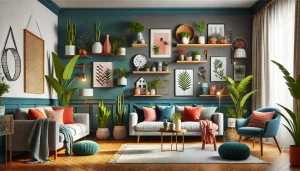
Working from home has become more than just a temporary solution, for many, it’s now a permanent part of their professional life. While the perks are obvious (goodbye commute, hello comfy slippers), the importance of creating a safe and comfortable home office space is often underestimated. The truth is, whether you’re in a corporate building or your own spare bedroom, the way you set up your work environment can impact not only your productivity but also your health and well-being, and if an accident does happen, knowing about time limits for reporting an injury can be just as important as having a good chair or proper lighting.
Here’s how to design a workspace that keeps you focused, motivated, and – most importantly, safe from avoidable injuries.
1. Choose the Right Location
The perfect home office isn’t just about style – it’s about function. If possible, dedicate a quiet area away from high-traffic zones in your home. This helps reduce distractions and gives you a space that feels like “work mode.”
Look for a room with plenty of natural light. Not only does it boost your mood, but it also reduces eye strain. If natural light is limited, invest in quality, adjustable lighting so you’re not squinting at your computer for hours.
2. Prioritize Ergonomics
An ergonomic setup isn’t a luxury – it’s a necessity. Poor posture or repetitive movements can lead to back pain, neck strain, and other injuries that affect your ability to work.
- Chair: Choose one that supports the natural curve of your spine. Your feet should rest flat on the floor, and your knees should be at a 90-degree angle.
- Desk: The surface should be at elbow height, allowing your wrists to stay straight while typing.
- Screen Position: Keep the top of your monitor at or slightly below eye level.
If you spend long hours at your desk, consider a sit-stand desk to encourage movement throughout the day.
3. Minimize Trip and Fall Hazards
It’s easy to overlook small risks at home, but cables snaking across the floor, unstable chairs, or cluttered walkways can cause unexpected accidents. Use cable organizers, keep floors clear, and make sure rugs are secured with non-slip pads.
While slips and trips might sound minor, they can cause serious injuries – and yes, if you’re working from home for your employer, those injuries may still be considered work-related. That’s why creating a safe environment matters, not just for your comfort but also for your protection.
4. Take Regular Breaks to Avoid Overuse Injuries
Sitting in the same position or repeating the same movement for hours can lead to repetitive strain injuries (RSIs). Set a timer to stand, stretch, or walk every 30–60 minutes. Use breaks to hydrate, rest your eyes, and reset your posture.
Remember: protecting your body during work hours isn’t only about the present moment. Long-term health is just as important as meeting today’s deadline.
5. Know Your Rights if an Injury Happens
Even in the most carefully arranged home office, accidents can still happen. A chair could collapse, you could trip while carrying work documents, or long hours at the computer could result in chronic pain. If the injury is related to your job duties, even when working from home, you may be entitled to support through workers’ compensation.
This is where having the right guidance makes a difference. Workers’ compensation lawyers understand the complexities of remote work claims and can help ensure you receive the benefits and medical coverage you’re entitled to. Their role isn’t just about legal paperwork, it’s about making sure you can focus on recovery without the stress of navigating the system on your own. And when you’re ready to take that next step, it’s easier than you think to find the right help with just a quick look at the options available online:
- Make Comfort a Priority
Safety is essential, but comfort is what makes your home office somewhere you actually enjoy spending time. Add personal touches: plants, artwork, or a cozy rug can make the space inviting. Keep the temperature comfortable, and consider noise-cancelling headphones if outside sounds are a distraction.
When you love your workspace, it’s easier to maintain good habits – like keeping it organized, taking breaks, and paying attention to your posture.
A safe and comfortable home office isn’t just about aesthetics, it’s about creating an environment where you can work efficiently, protect your health, and enjoy your day. By taking steps to reduce risks, you’re not only preventing injuries but also setting yourself up for long-term success.
And remember: if an injury does occur while working from home, you don’t have to figure it out alone. Experienced workers’ compensation lawyers can guide you through the process and make sure you get the support you deserve.








